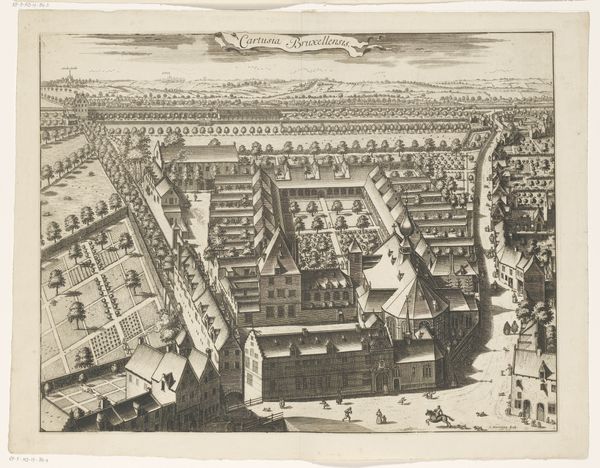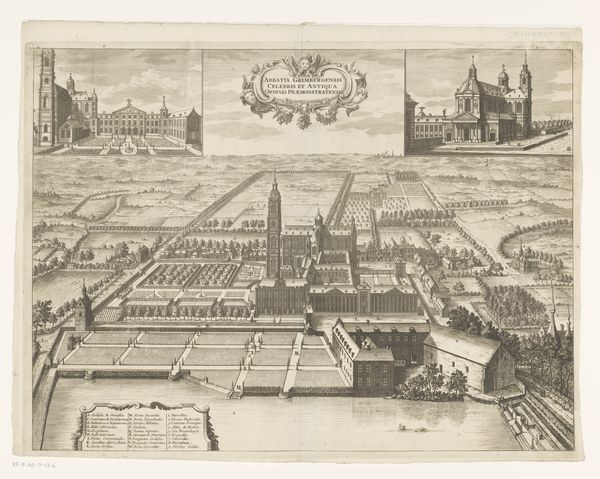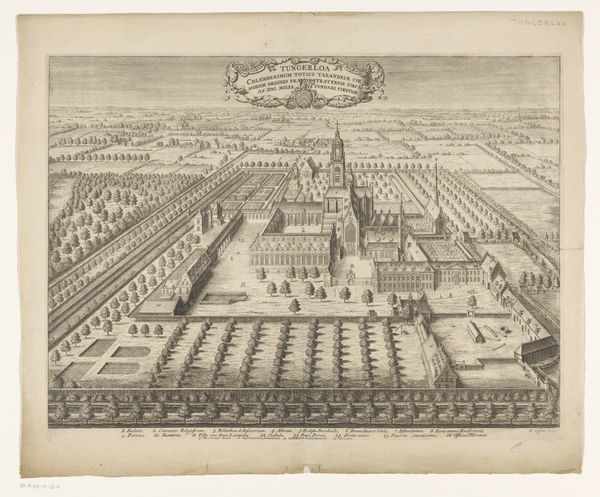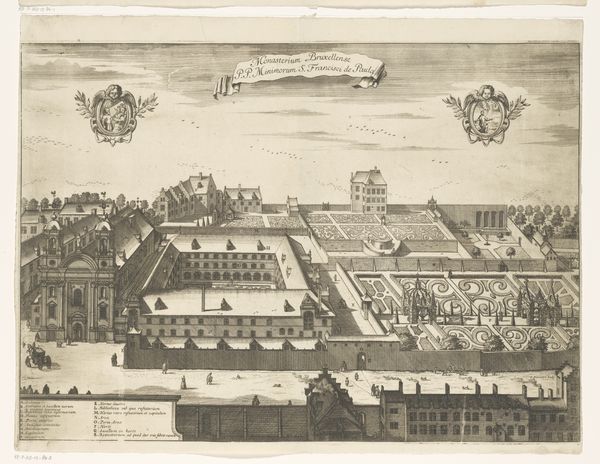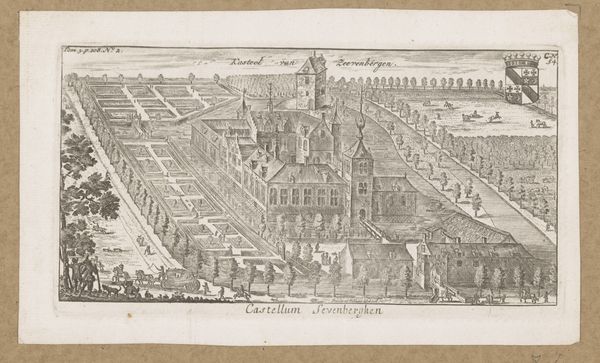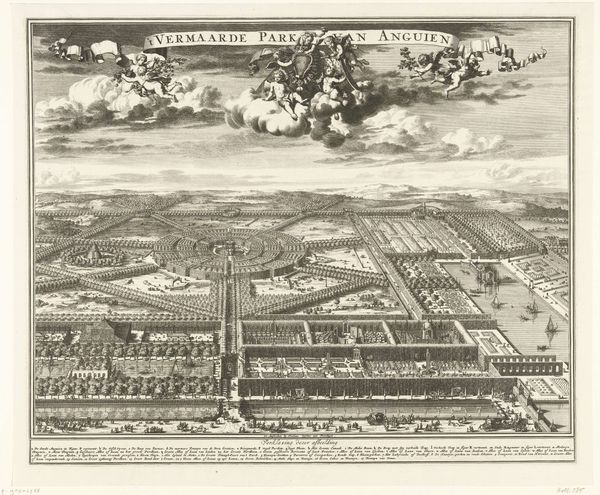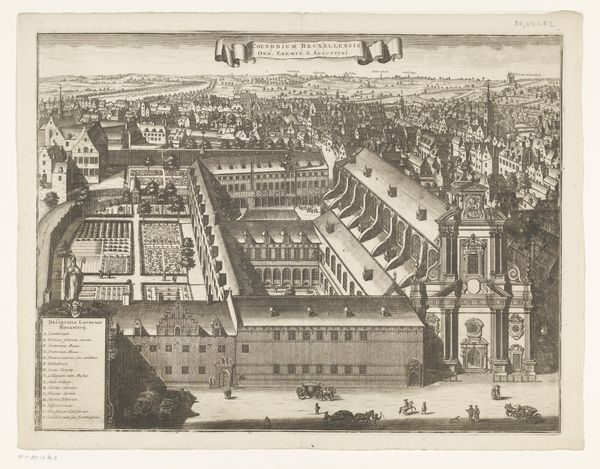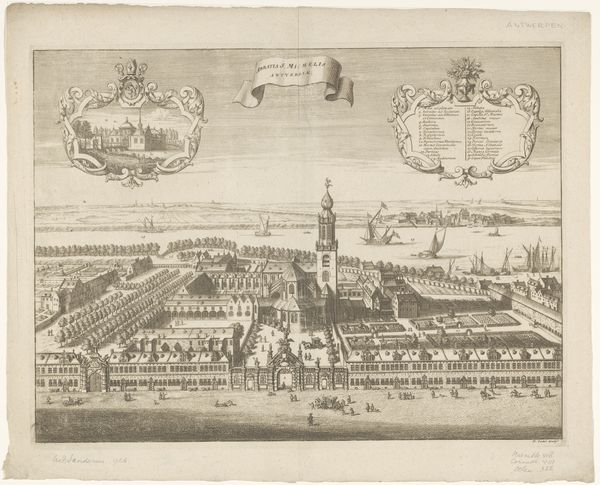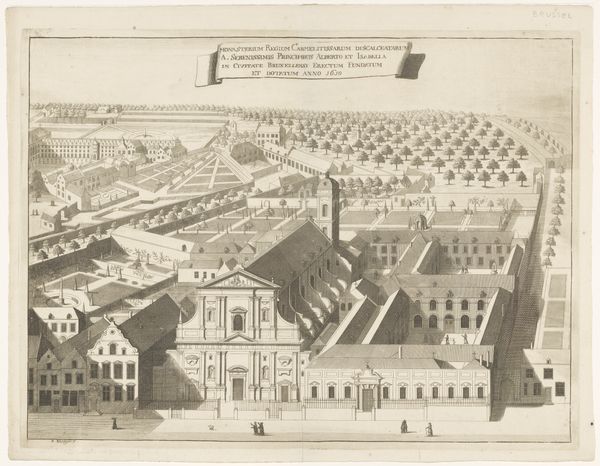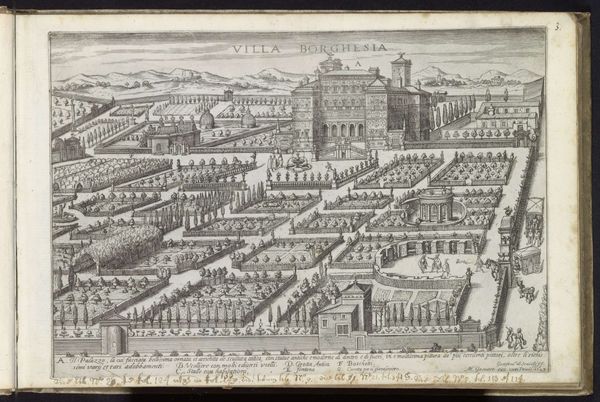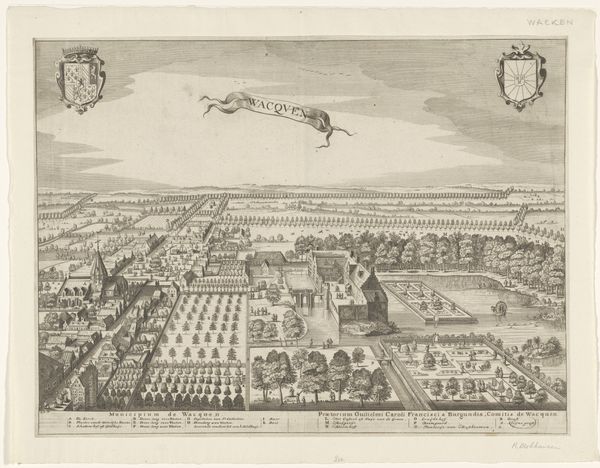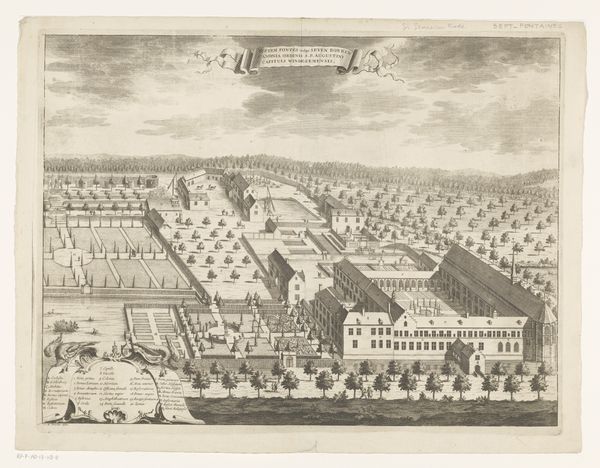
print, etching, engraving, architecture
#
medieval
#
baroque
# print
#
etching
#
old engraving style
#
landscape
#
etching
#
cityscape
#
engraving
#
architecture
Dimensions: height 361 mm, width 467 mm
Copyright: Rijks Museum: Open Domain
Curator: This engraving presents the Abbey of Heylissem. It’s an etching, dating roughly from 1726 to 1734. Editor: My immediate impression is of rigid order—a controlled and somewhat detached perspective, softened by the almost lace-like texture of the etching. Curator: Indeed. Note the precise linear quality, the detailed architectural rendering. The geometric distribution of forms suggests a rational plan, aligning perfectly with Baroque sensibilities. Consider the light. It is uniformly distributed with meticulous shadowing defining volume across planes. Editor: It almost feels like a map. But these spaces weren't simply functional; they were performative. Religious power projected outwards, controlling the landscape, its resources and also its narratives. We can understand it through its use in projecting the abbey's wealth. The surrounding planned gardens— status becomes very apparent. Curator: Agreed, the gardens add depth through spatial arrangement. These ordered plantings work as perspectival tools, furthering the optical trajectory from foreground into distance, guiding one's gaze toward the indefinite horizon line. The inscription is also working within the framework. The elegant typography serves to further organize and identify. Editor: But even this ideal vision leaves out realities. Where are the farmers? The villagers? Whose labor funded this project? The architecture, while captivating, also subtly silences other stories, solidifying established structures of authority through depiction. Curator: Perhaps. Yet, viewed formally, there is a fascinating tension here between depiction and abstraction. Every tree is given due attentiveness. These textures become near fractal upon closer viewing, drawing me away from any notion of pure propagandistic representation. It's so systematic and meticulous. Editor: I concede your point about detail. It creates an eerie sense of isolation; the perfection amplifies its separation from any practical purpose. That controlled aesthetic can tell us so much about the structures of belief and the values held in that society. Curator: Precisely. The power lies in understanding these tensions within this plane. The meticulous nature offers more insight upon initial examination. Editor: I concur, contemplating the political role intertwined with a composition offers fresh ways to reassess its value to audiences.
Comments
No comments
Be the first to comment and join the conversation on the ultimate creative platform.
